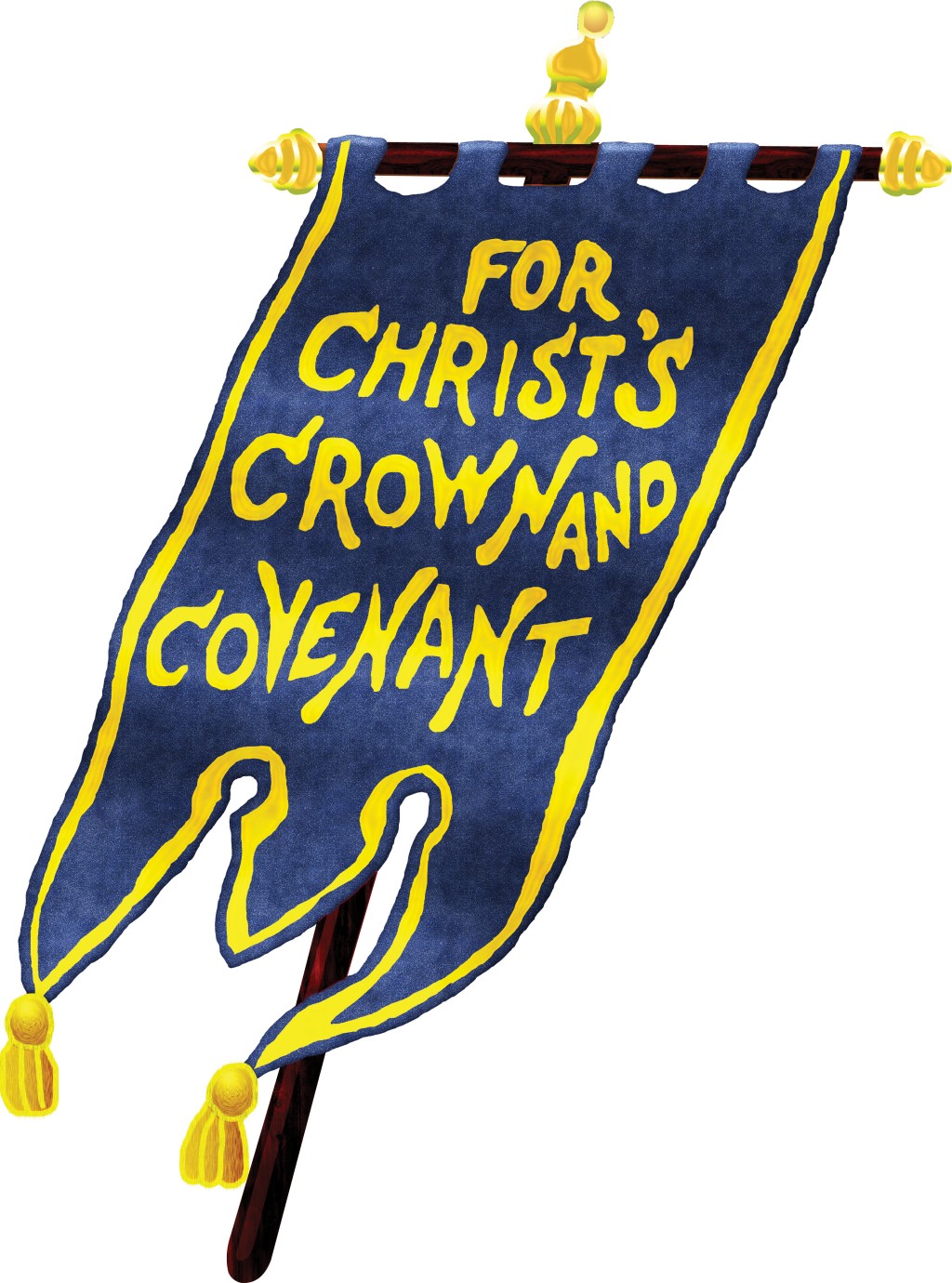You have free articles remaining this month.
Subscribe to the RP Witness for full access to new articles and the complete archives.
A blue banner hangs prominently in many RP churches. Church plants sometimes wonder how to get one. Visitors sometimes wonder why a strict second-commandment-keeping denomination flies a flag. Yet, the presence of the blue banner is more muted than ever, like the fading of the blue in so many banners. A poem was once written for the banner and a song too. Now, it is little more than letterhead to many of us. So, why do we have a blue banner?
The much-repeated history of the blue banner is that it began as a battle flag in 1639 in the confrontation at Dunse Law in the Covenanter army under General Alexander Leslie. This story appears on congregational websites from nearly every nation that has an RP church. The blue banner is a transnational symbol of shared history. In 1827, the RPCNA Synod proposed having regular correspondence with the synods in Ireland and Scotland with this rhetorical flourish: “Shall we unlock the repository of the martyr’s flag?” Afterward, their letters are replete with references to the blue banner for 100 years. This international connection was so well represented by the banner that a dissent from the Covenant of 1871 claimed that the American covenant was akin to casting off one’s patrimony and abandoning the blue banner.
The blue banner also appeared in reports to Synod as a rhetorical flourish for distinctive RP convictions. The embroidered message “For Christ’s Crown and Covenant” marked the climax of the report. The Great Lakes-Gulf Presbytery did this as recently as 1991. The blue banner was repeatedly referenced in the appropriately named periodical, Our Banner. In that publication, it signified the RP Church’s holiness in being the lone yet militantly devoted standard-bearer for getting Jesus acknowledged as King over America. It also marked the existence of the RP Church, in both persistence or expansion. The blue banner memorialized the founders of the denomination while contemporizing persistent devotion to their principles.
The blue banner appeared in cloth as well as word. In 1921, the Scottish Synod told their American cousins that it stood before them in all their meetings. In 1902, Winchester RPC displayed a blue banner and American flag side by side for the Covenanter Youth Convention. As far back as 1884, the Elkhorn, Ill., congregation celebrated its 11th anniversary with a blue banner trimmed with the ancient motto in gold as its centerpiece. When doctors Kate and Jean McBurney departed to serve as missionaries in China, they received an American flag and a blue banner. It was both a verbal signal and a material symbol.
The blue banner was redefined in the 20th Century in keeping with the denomination’s changes. In many congregations, Blue Banner societies enacted their slogan by supporting missions, promoting national reform, and evangelizing their neighborhoods. The hardest working society received a silk blue banner with the Great Commission in gold letters, not “For Christ’s Crown and Covenant.” Further, in 1946, Dr. J. G. Vos began publishing Blue Banner Faith and Life. Until it was discontinued in 1979, due to his declining health, this publication contributed to the recovery of confessional Reformed theology in the RPCNA. The blue banner was stamped on a denomination-defining product not explicitly devoted to the promotion of Covenanter history or principles but to classically Reformed teaching.
As a rhetorical device and religious artifact, the blue banner signified devotion to Covenanter history and principles throughout the 19th Century and into the first half of the 20th. Today, one web-site calls the blue banner “the logo of the RPCNA.” Other sites refer to it as “a symbol of the Re-formed faith…a reminder of our commitment to the great truths of the Word of God.” These are broader applications of the banner. Once the militant flag of Covenanter conviction, the blue banner is now expanded as an ecclesiastical logo, a visual part of the denominational brand, as it were. Blue banner pins were sold as early as the 1950s, if not before. In 2003, blue banner tie clasps, necklaces, and bracelets joined the cache of trinkets.
Logo is the proper term, but not in a legal sense. From 2000–2005, Synod seriously considered making the blue banner a registered trademark, but decided against it. They recognized complexities in multiple claims to the trademark and the uncharitable nature of needing to sue fellow believers who infringe on our trademark. Instead, the blue banner still represents the international unity found in our shared history even as it has changed from being a symbol of Covenanter conviction to a sign of a faithfully Reformed denomination. In this, the blue banner remains an apt image for our denomination: historically rooted yet still reforming.
